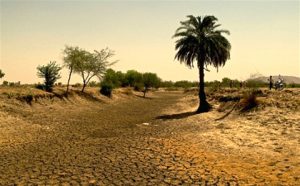Malaria has been grabbing headlines since a paper published in the journal Science earlier this month showed that rising temperatures are pushing the disease to higher altitudes in parts of Africa and South America. But dengue fever, another mosquito-borne disease with a lower profile, poses the greater threat to China as the climate warms, says a leading public health expert.
A leaked report on climate adaptation from the Intergovernmental Panel on Climate Change (IPCC), due for publication next week, also highlights dengue as a disease set to spread, along with diarrheal illnesses and schistosomiasis – a parasitic condition transmitted by snails that had almost been eliminated in China and is now expected to see a resurgence in the north of the country thanks to rising temperatures and rainfall.
Almost 600 people fell ill with dengue in a single outbreak in Yunnan last summer, the latest in a growing number of epidemics seen in China since the 1990s that started in the southern coastal regions of Guangdong, Hainan and Guangxi and have crept further north and west to Fujian, Zhejiang and Yunnan.
“Dengue is an important problem. It’s set to increase and we aren’t doing enough to develop concrete tools for its control,” says Debarati Guha-Sapir, director of the WHO Collaborating Centre for Research on the Epidemiology of Disasters (CRED) and professor at the University of Louvain School of Public Health in Belgium. “In China I would say that, with urbanisation aggravated by climate change…The burden of disease is going to be a problem.”
China’s outbreaks are the tip of the iceberg: the world has seen a 30-fold increase in dengue cases over the last 50 years, according to the World Health Organisation, which estimates there may be 50-100 million infections globally each year. Fiji alone has recorded more than 10,000 cases since October 2013, with 11 deaths. Twenty-two people have already died in Malaysia this year.
Until 1970, only nine countries had been hit by severe dengue epidemics – now it is endemic in more than 100, says the WHO. And the Asia Pacific region is particularly vulnerable, bearing up to 70% of the disease burden according to the data platform DengueNet.
Urbanisation driving disease
Like malaria, dengue’s distribution has been linked to a shifting climate – mosquitos thrive in warmer, wetter conditions. In Mexico, researchers have found the number of people falling ill rises at temperatures above 18 degrees Celsius and below 35 degrees. They predict a 40% increase in cases in areas where the disease is already established by 2080, compared with 1990-2000 figures. A similar study in Singapore established a link between dengue incidence and average temperature and precipitation in the city state.
Climate shifts are not the only relevant factor, however. In China, says Sapir, the growth in dengue is linked to a fateful combination of “rampant urbanisation” and increasingly severe weather events like cyclones and tropical storms, which conspire to create the ideal conditions for tropical disease. The mosquito that transmits dengue – the aedes aegypti – can’t fly very far and so the virus thrives in densely populated cities and towns. Moreover, concretisation of large spaces in China is reducing water run-off, boosting urban flooding and providing new breeding sites for mosquitos.
As worrying as the geographical spread of the disease is the fact it appears to be getting more aggressive, explains Guha-Sapir. Although most cases involve only a high fever, rash and joint pain, the proportion of people contracting dengue hemorrhagic fever (DHF) has been steadily rising. DHF is a severe form of the disease, with symptoms including bleeding from the nose and gums and internal haemorrhaging, and can be fatal.
Since there is no vaccine or cure for dengue, this poses a challenge for public health systems. The only way to treat a severely ill patient, explains Sapir, is to keep replacing the liquids being lost, meaning regular blood and plasma transfusions and very focused care – easy in a big metropolis, perhaps less so in any number of the burgeoning cities in China’s poorer parts.
What can be done to stem the tide? Sapir says the Chinese government should work rapidly to “unpack” its recent outbreaks, looking for patterns that link the people getting sick and using the information to build policy – for example, the age of victims could prompt an awareness building campaign for young adults. The country’s schistosomiasis eradication programme has shown its public health system can be “extremely well organised”, she adds.
Allowing dengue more space beside malaria on the global health agenda could help too. “Malaria has taken a lot of the oxygen,” says Sapir. “Dengue has attracted more attention [than in the past] but still it hasn’t attracted enough to provide effective research, control and early detection and treatment.” There are signs this could be changing. The WHO has a plan to reduce global dengue morbidity by 25% – and deaths by 50% – by 2020 through better detection and treatment of severe cases, training of health staff and other measures. The IPCC report is another signal of increased interest.
This is not to say malaria should get less attention. Mercedes Pascual, professor of ecology at the University of Michigan and co-author of the recent Science paper on malaria in the highlands of Ethiopia and Colombia says surveillance of the disease needs to be extended to newly vulnerable regions. Her research suggests a temperature rise of just one-degree Celsius will lift the area with malaria exposure by 150 metres. In China too, there are risks: a 2012 paper from a group of Chinese scientists concluded that shifting rainfall patterns were driving a re-emergence of malaria in northern Anhui province, in east China.
Risky predictions
Drawing broad conclusions from such research comes with a health warning, however. Pascual is quick to point out that extrapolating from her research to regions like Europe “makes no sense”. Felipe Colon, co-author of the study on dengue in Mexico, meanwhile says under- and over-reporting of the disease and reliance on climate modelling are sources of uncertainty, as is lack of data on the confounding effect of socioeconomic development on its spread – the distance between houses, for example, can make a big difference to a mosquito’s ability to find suitable hosts. “Making predictions is risky,” he says.
Others, like Kevin Lafferty, an ecologist at the US Geological Survey, point out that even if the distribution of tropical disease changes with climate change, that won’t necessarily translate into an overall rise. “As the Science paper indicates, warming will make it warm enough for malaria to transmit at higher altitudes than before,” he says. “But, that also means that in some places it will be too warm to transmit malaria at lower altitudes. Of course, people have less interest in that part of the story.”





